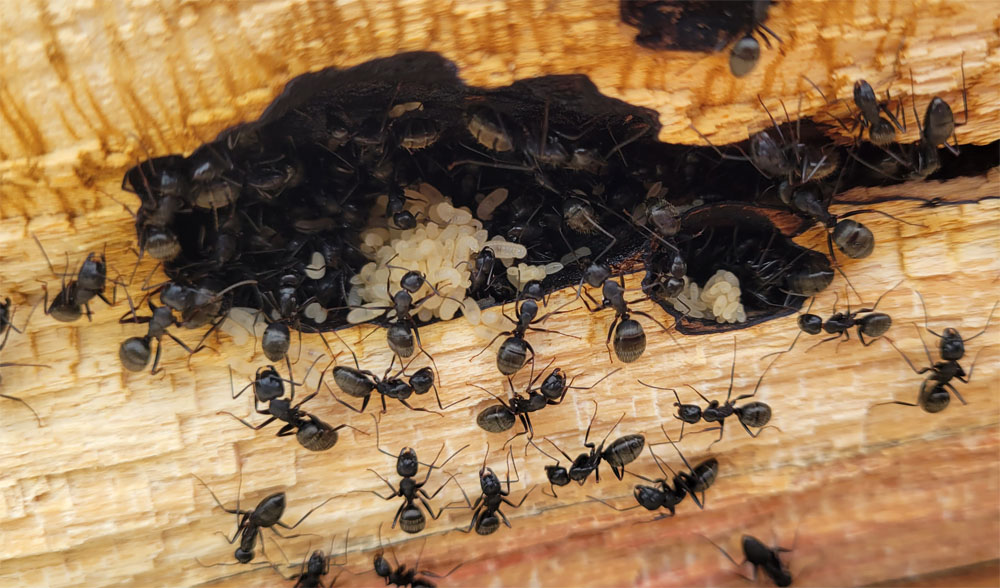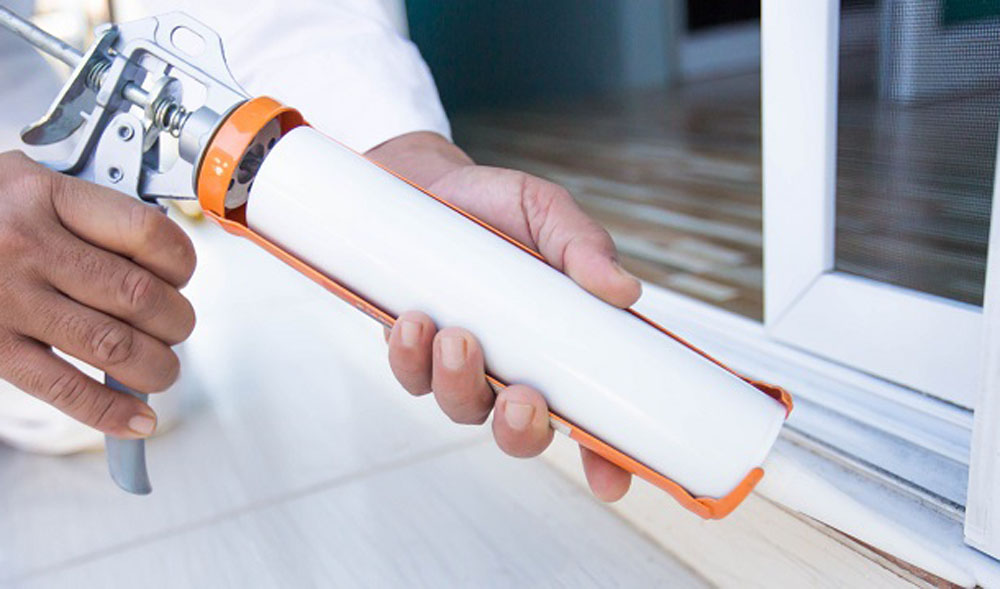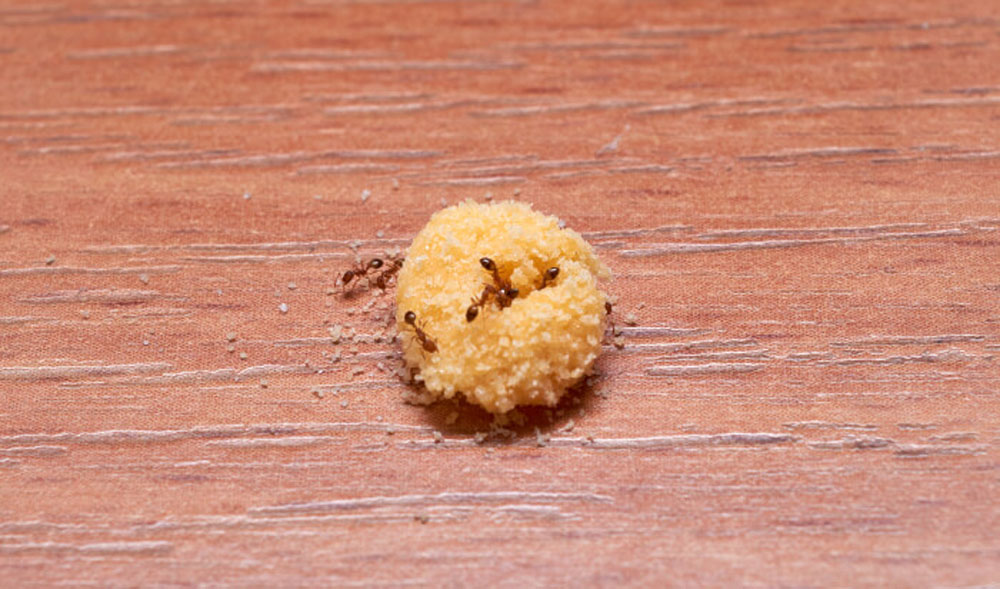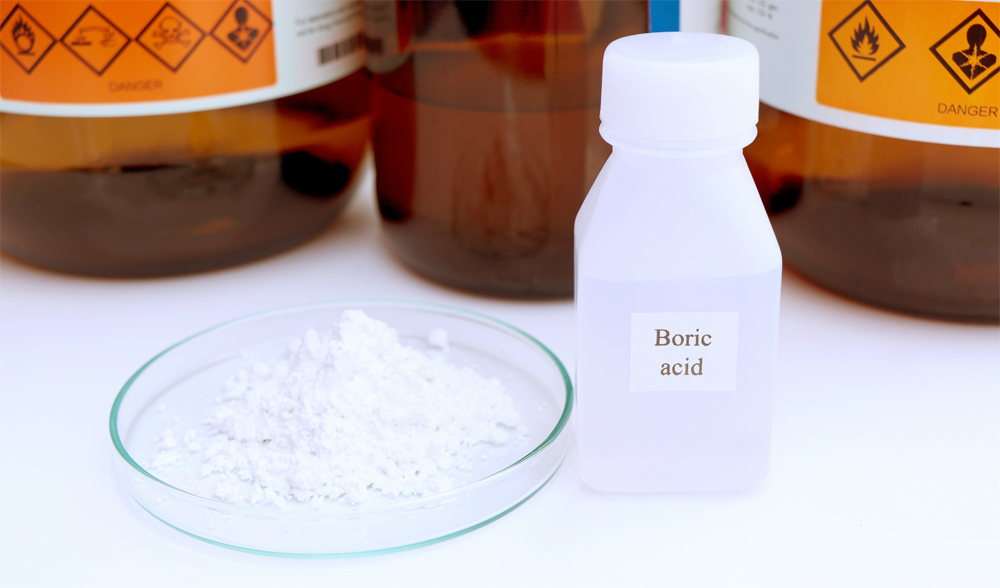The presence of ants inside your home or business can be bothersome and potentially harmful, as it may lead to spoiled food, damaged property, or painful bites. However, with a bit of knowledge, patience, and targeted removal techniques, it is possible to permanently eliminate these pests.
To take back control of your home or office, the initial step is to determine the type of ant infestation present. Ant infestations can typically be categorized into two types: those in which ants originate from outside the building but venture indoors for foraging, and those in which ants both forage and nest inside the building. Certain ant species predominantly live outdoors but may enter buildings for food or refuge during harsh weather conditions. The strategy employed to eliminate the ant infestation will depend on the type of infestation and the specific ant species involved.

How to Distinguish Ant Species
The presence of ants entering through a window or door crack is a strong indicator that they originate from outside and are searching indoors for food.
If you observe a line of ants moving to or from a crevice in a wall, cabinet, electrical outlet, or floor, there is a likelihood that the ants have formed a nest within your home. Identifying the entry points will assist you in selecting the most effective method for controlling, removing, and preventing the ant infestation.
- Carpenter Ant: Carpenter ants prefer sweet food and food with proteins. They often exist in window frames, firewood, fence posts, hollow doors, and tree stumps.
- Argentine/House Ant: Argentine ants, or house ants, also like to take sweets and proteins. Places where they can often be found are inside wall voids, around water pipes or heaters or shallow mounds in soil or debris.
- Red Imported Fire Ant: Red imported fire ants share the same food preference with the above two. They tend to live in irregular craters in wood, outdoor dirt mounds with multiple openings and under rocks.
Some Mild Methods
By combining the following ant control methods, it is possible to break the ant life cycle and eliminate ants and their colonies effectively. To avoid indoor ant infestations, prevention is critical.

Daily Cleaning
To eliminate ant attractants, it is advisable to maintain cleanliness in the kitchen and food preparation areas by storing sweet and protein-based foods in tightly sealed containers or refrigerating them. Clean counter-tops regularly, empty garbage bins frequently and ensure that they are tightly sealed. Before discarding, wash empty food cartons. Clean up any food spills and wash dishes promptly. Regularly sweep and mop floors to eliminate crumbs and deter scout ants. To keep ants at bay, create a barrier around pet food dishes and potted plants that attract ants by encircling them with a larger dish filled with a solution of soapy water.
Non-Toxic Choices
Along with maintaining sanitation, it is essential to locate and seal ant entry points. Seal gaps around windows and weather-strip doors, as well as caulk areas surrounding pipes or faucets that provide access to wall voids or outdoor spaces, door frames, flooring cracks, sinks, and any other spots where ants may enter easily.

Early Action
Using a solution of soapy water or window cleaner can be as efficient as insecticides in killing ants instantly, without the harmful residual effects. Additionally, using citrus-based cleaners, peppermint soap, cayenne pepper, or cinnamon can eliminate the invisible chemical scent trail left by ants to guide other ants. To detect ant infestations early, remove wandering “scout” ants and their scent trail promptly.
Ant Insecticide Types
Various ant insecticides are available in the market, such as bait, gel, granule, and aerosol spray formulations. However, it is essential to take precautions to limit human, pet, and environmental exposure while using these ant pesticides. The details mentioned below will assist you in comprehending the risks associated with the active components of these products.
Baits and Gels
Ant baits are available in many forms, such as granules, solid blocks, gels, or liquids. Some bait products contain the active ingredient in the bait station, while others come as a liquid that you can pour into the bait container provided in the package. Opting for bait stations that do not require you to handle the product, except for setting it out, can minimize exposure to chemicals.

While using bait stations or gels, it is crucial to allow ants to carry enough bait back to their nest, and hence avoid wiping up all of the ants immediately. Place the bait station close to the line of ants and their entry point, ensuring it is out of children and pets’ reach and not near food that could become contaminated. Apply gels in cracks and crevices located behind and under appliances, cabinets, sinks, or closets. The ants will begin to carry the bait back to their nest within a few hours. Although it may take a few days to eliminate the line of ants completely, the visible ant population will decrease fairly quickly.
To avoid ant populations becoming resistant to a particular ant pesticide active ingredient, it is advisable to switch between several different bait products containing different active ingredients. This will help ensure that the ants do not develop a resistance to any one particular ant pesticide. To begin, select one bait product and use it. The next time, choose a different product and continue to rotate between them as needed. If you notice that one ant pesticide is not working effectively, switch to a different one as you may be dealing with ants that have already developed a resistance to the active ingredient.

Below are descriptions of the various active ingredients used in ant baits and their toxicity properties:
Boric Acid and other Borates: Ant baits that contain boric acid or borates are typically mixed with sugar or syrup and are highly effective against Argentine ants and grease ants. Forager ants are attracted to the bait and carry it back to the colony, where it kills the queen and other ants. Boric acid and other borates are naturally occurring substances that have low acute toxicity and are not absorbed through the skin. However, ingestion of small amounts of boric acid over several months has been shown to reduce sperm counts in laboratory animals. Borates are also toxic to plants.
Insect Growth Regulators: Methoprene and pyriproxyfen are insect growth regulators that are effective against fire ants by inhibiting their development from one stage to the next. These active ingredients have low acute toxicity to humans, but can be harmful to aquatic life. It is important to dispose of used baits properly to prevent them from contaminating water sources.
Hydramethylnon: Hydramethylnon is commonly found in baits that come in the form of gels, liquids, and granules, and are used to combat Argentine ants, carpenter ants, fire ants, and other similar pests. Although it has low acute toxicity to humans and is not easily absorbed through the skin, it can be toxic to the developing fetus and may cause interference with reproduction at moderate doses.
Neonicotinoids: Neonicotinoid type ant pesticides, including imidacloprid, clothianidin, acetamiprid, and thiamethoxam, are pesticides commonly used for indoor ant control in the form of gels or liquids. These products are specifically intended for use against Argentine ants and carpenter ants, among other ant species. While neonicotinoids have moderate acute toxicity to humans and can be absorbed through the skin to some extent, they are primarily toxic to the nervous system. Additionally, long-term exposure to imidacloprid has been shown to reduce sperm counts in laboratory animals.
Avermectin: Avermectin-containing baits are commonly used to control fire ants, Argentine ants, and carpenter ants, with granular formulations being a popular choice. While avermectin (also known as abamectin) has high acute toxicity in pure form, concentrations used in ant baits (less than 0.01%) are considered to have low acute toxicity. However, avermectin is still toxic to the nervous system and the developing fetus even at very low doses. It is not significantly absorbed through the skin.
Fipronil: Fipronil is employed to control various types of ants, such as fire ants, Argentine ants, and carpenter ants. The ant pesticide can be found in formulations including gels, granules, liquids, and impregnated materials. Fipronil has moderate acute toxicity when ingested, but it is not significantly absorbed through the skin. It can be toxic to the nervous system and has been classified as a possible carcinogen by the US Environmental Protection Agency.
Metaflumizone: Metaflumizone baits come in granular and pelleted formulations and are used for fire ant control. Although it has low acute toxicity, moderate to high doses of metaflumizone have been found to be toxic to reproduction and development.
Indoxacarb: Indoxacarb baits, packaged as granular formulations, are utilized for controlling fire ants. The active ingredient, (S)-Indoxacarb, has low acute toxicity.
Fenoxycarb: Fenoxycarb is an active ingredient used in products designed to control fire ants. These ant pesticides come in granular formulations. Fenoxycarb has low acute toxicity and is not readily absorbed through the skin. However, with prolonged exposure, it can be toxic to the liver and has been classified as a probable carcinogen.
Aerosol Sprays and Foggers
Using aerosol sprays or foggers to control ants is discouraged due to the high risk of harm from inhaling the aerosol during application. Additionally, fogging can leave behind pesticide residues that can be distributed throughout the home environment, and can pose an explosion risk in homes with gas appliances. Outdoor sprays can also be problematic, as they can drift away and pose a danger to non-target wildlife, such as bees and other beneficial insects.
Botanicals: Various botanicals are offered as aerosol sprays, such as limonene, phenylethyl proprionate, thyme oil, capsicum oleoresin, pyrethrins, cinnamaldehyde, neem oil, eugenol, linalool, and allyl isothiocyanate. These natural substances are frequently found in food and therefore do not pose a contamination risk to surfaces. However, inhaling the spray can be harmful.
Pyrethroids: Pyrethroids are commonly found in aerosol sprays or foggers used to control insects. While they can kill sprayed insects, they usually die before returning to their nests, so the population is not significantly depleted. Pyrethroids can be identified by their active ingredient name ending in “-thrin,” such as allethrin, bifenthrin, permethrin, cyfluthrin, cyhalothrin, cypermethrin, deltamethrin, esfenvalerate, imiprothrin, tetramethrin, tralomethrin, and phenothrin. Synergists, such as piperonyl butoxide, are often added to increase the toxicity of the active ingredient. Because this type of ant pesticides are commonly packaged as aerosols, there is a high likelihood of exposure through inhalation and surface contamination. Pyrethroids have been associated with triggering asthma attacks and allergic reactions in sensitive individuals.
Organophosphates and carbamates: Due to their hazards to children, the organophosphate chemicals chlorpyrifos (Dursban products) and diazinon were removed from the market in 2001 and 2002. The remaining chemicals in this group are neurotoxic even at low doses and some have been classified as Probable or Possible carcinogens, such as propoxur, DDVP, and malathion.



